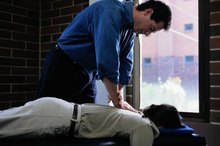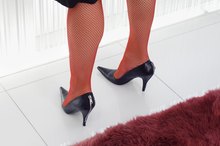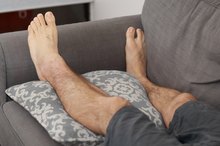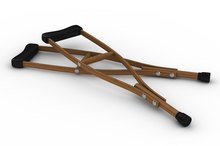Use of Compression Hose After Total Knee Replacement
Total knee replacement surgery constitutes one of the largest, most invasive and most complex surgeries that an orthopedic surgeon performs. The fact that surgical knee replacement has become quite common doesn't lessen the seriousness of the procedure, or its impact on the patient. Recovery from this surgery depends largely on your willpower and resolve. One huge factor is your willingness and desire to follow medical direction. Compression hose, or stockings, are an important tool that you will use in your recovery from total knee replacement.
Purpose
Compression hose aren't attractive, or even comfortable. They're white, thick and tight, and they roll on from ankle to hip. Most people take one look and cringe. But these unsightly stockings serve a simple purpose that could save your life. By compressing the leg, compression hose keep swelling to a minimum and encourage proper circulation.
Without good circulation, blood clots can form in your veins, especially deep within the leg. If a blood clot then reaches your heart, brain or lungs, you have a risk of death. In addition to compression hose, you may need to take blood thinning medication and do leg exercises after surgery to promote good circulation and prevent blood clots from forming.
Wearing Compression Hose
Weight Bearing Immediately After Bunionectomy
Learn More
When you wake from your knee replacement surgery, a compression stocking will be on the leg that had the surgery. Depending on your situation, you may have one on the other leg, as well. Your post-surgical instructions will include wearing compression hose for several weeks.
Change your compression hose every few days to wash them, or they will become smelly. Wash them by hand or on the delicate cycle in your washing machine, then air dry. Getting compression hose on and off is difficult. Have someone help you do this. Despite these difficulties, the benefits of compression hose far outweigh the annoyance factor. It's easy to do laundry. Dealing with a stroke or heart attack isn't as simple.
Replacements
Since you will need to wear one pair of compression hose while laundering the other, remember to do two things before you leave the hospital. First, make sure you leave with an extra set of stockings. Second, ask your surgeon where to go if you need more compression hose. If you should tear them, or have an accident that renders them unusable, replace the stockings immediately. Most hospitals carry them, and with a doctor's prescription, you may be able to get replacement compression hose free of charge.
Duration of Treatment
How to Prevent Swelling With an Orthopedic Boot
Learn More
Don't simply decide one day to stop wearing your compression hose. Wait until your doctor clears you before you stop. Depending on your condition and recovery rate, you may be able to take the stockings off sooner rather than later. But you're not the expert—your surgeon will tell you when to take off your compression hose for good. Following your doctor's orders is the key to a good recovery from total knee replacement surgery.







